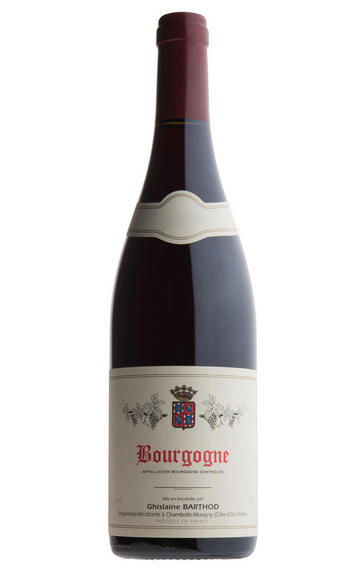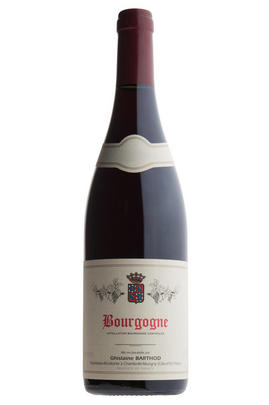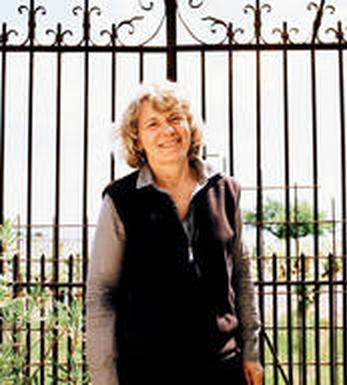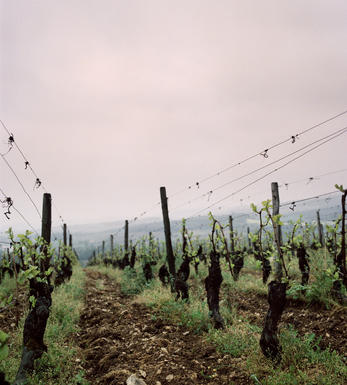
2015 Bourgogne Rouge, Domaine Ghislaine Barthod

Critics reviews
Neal Martin - 28/12/2016
About this WINE

Domaine Ghislaine Barthod
Ghislaine Barthod’s domaine originated in the 1920s with Marcel Noëllat, whose daughter married Gaston Barthod – a soldier stationed in Dijon who came to buy some wine and got the girl as well. He gave up military life for the vineyards in ’60.
His daughter, Ghislaine, and her partner, Louis Boillot, bought their current premises overlooking Premier Cru Les Feusselottes in ’86. Though they share the team who work the vineyards, the vinification and commercial aspects of their businesses are kept separate.
The domaine has an incomparable range of Chambolle-Musigny terroirs, with 11 separate Premier Cru bottlings and highly regarded Bourgogne and village wines.

Bourgogne Rouge
Bourgogne Rouge is the term used to apply to red wines from Burgundy that fall under the generic Bourgogne AOC, which can be produced by over 350 individual villages across the region. As with Bourgogne Blanc and Bourgogne Rosé, this is a very general appellation and thus is hard to pinpoint any specific characteristics of the wine as a whole, due to the huge variety of wines produced.
Around 4,600 acres of land across Burgundy are used to produce Bourgogne Rouge, which is around twice as much as is dedicated towards the production of generic whites.
Pinot Noir is the primary grape used in Bourgogne Rouge production, although Chardonnay, Pinot Blanc, Pinot Gris and in Yonne, César grapes are all also permitted to make up the rest of the wine. These wines tend to be focused and acidic, with the fruit less cloying than in some New World wines also made from Pinot Noir, and they develop more floral notes as they age.
Although an entry-level wine, some Bourgogne Rouges can be exquisite depending on the area and producer, and yet at a very affordable price.

Pinot Noir
Pinot Noir is probably the most frustrating, and at times infuriating, wine grape in the world. However when it is successful, it can produce some of the most sublime wines known to man. This thin-skinned grape which grows in small, tight bunches performs well on well-drained, deepish limestone based subsoils as are found on Burgundy's Côte d'Or.
Pinot Noir is more susceptible than other varieties to over cropping - concentration and varietal character disappear rapidly if yields are excessive and yields as little as 25hl/ha are the norm for some climats of the Côte d`Or.
Because of the thinness of the skins, Pinot Noir wines are lighter in colour, body and tannins. However the best wines have grip, complexity and an intensity of fruit seldom found in wine from other grapes. Young Pinot Noir can smell almost sweet, redolent with freshly crushed raspberries, cherries and redcurrants. When mature, the best wines develop a sensuous, silky mouth feel with the fruit flavours deepening and gamey "sous-bois" nuances emerging.
The best examples are still found in Burgundy, although Pinot Noir`s key role in Champagne should not be forgotten. It is grown throughout the world with notable success in the Carneros and Russian River Valley districts of California, and the Martinborough and Central Otago regions of New Zealand.


Buying options
Add to wishlist
Description
Rich, friendly purple with an attractive perfume, this is tight and concentrated, the fruit balanced by quite high acidity which will soon resolve into the heart of the wine. This is very backward but highly promising, especially given its provenance from the Bons Bâtons vineyard. Drink 2020-2025.
Jasper Morris MW, Wine Buyer
With prices in Burgundy still rising, even if often for understandable reasons, the appellations Bourgogne Blanc and Bourgogne Rouge are great places to look for affordable wines. You get the opportunity to drink wine from a top winemaker, from vines which are adjacent to the famous villages, and which will be accessible earlier. The 2005 Bourgognes Rouges are still delicious and youthful more than 10 years later, but most wines have been drinking well for a few years now.
wine at a glance
Delivery and quality guarantee